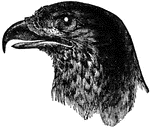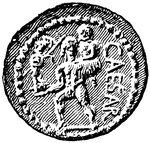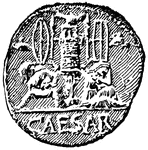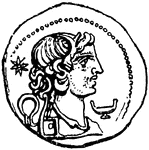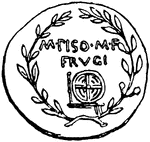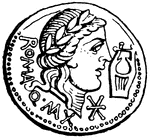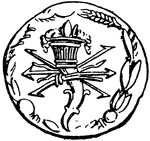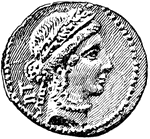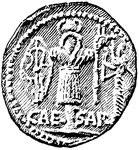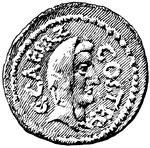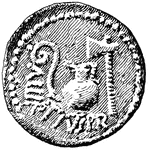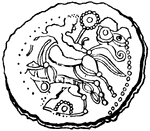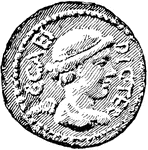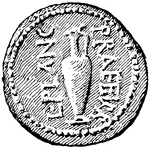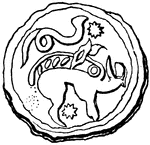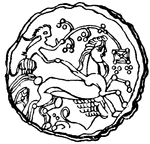
The Giant
"This may be done in two ways: first and most difficult, by one boy standing on another's shoulders,…

Tadpole
"The Tadpole is the larva of the anurous amphibia, sometimes so far extended as to include larvaæ…

Tadpole
"The Tadpole is the larva of the anurous amphibia, sometimes so far extended as to include larvaæ…

Frog Eggs
"The Tadpole is the larva of the anurous amphibia, sometimes so far extended as to include larvaæ…

Frog Egg
"The Tadpole is the larva of the anurous amphibia, sometimes so far extended as to include larvaæ…
Tapeworm
"The Tapeworm is an intestinal worm, Tænia solium, in form somewhat resembling tape. Its length…
!["The Tapeworm is an intestinal worm, Tænia solium, in form somewhat resembling tape. Its length is from 5 to 15 yards, and its breadth from two lines at the narrowest part to four or five at the other or broader extremity. At the narrow end is the head, which is terminated anteriorly by a central rostellum, surrounded by a crown of small recurved hooks, and behind them four suctorial depressions; then follow an immense number of segments, each full of microscopic ova. The segments are capable of being detached when mature, and reproducing the parasite. There is no mouth; but nutrition appears to take place through the tissues of the animal, as algæ derive nourishment from the sea water in which they float. The digestive system consists of two tubes or lateral canals, extending from the anterior to the posterior end of the body, and a transverse canal at the summit of each joint. [Pictured] A single segment or proglottis magnified; 1, generating pore; 2, water vessels; 3, dendritic ovary."—(Charles Leonard-Stuart, 1911)](https://etc.usf.edu/clipart/16500/16595/tapeworm2_16595_mth.gif)
Tapeworm
"The Tapeworm is an intestinal worm, Tænia solium, in form somewhat resembling tape. Its length…
!["The Tapeworm is an intestinal worm, Tænia solium, in form somewhat resembling tape. Its length is from 5 to 15 yards, and its breadth from two lines at the narrowest part to four or five at the other or broader extremity. At the narrow end is the head, which is terminated anteriorly by a central rostellum, surrounded by a crown of small recurved hooks, and behind them four suctorial depressions; then follow an immense number of segments, each full of microscopic ova. The segments are capable of being detached when mature, and reproducing the parasite. There is no mouth; but nutrition appears to take place through the tissues of the animal, as algæ derive nourishment from the sea water in which they float. The digestive system consists of two tubes or lateral canals, extending from the anterior to the posterior end of the body, and a transverse canal at the summit of each joint. [Pictured] Head of tænia solium (enlarged)."—(Charles Leonard-Stuart, 1911)](https://etc.usf.edu/clipart/16500/16599/tapeworm3_16599_mth.gif)
Tapeworm
"The Tapeworm is an intestinal worm, Tænia solium, in form somewhat resembling tape. Its length…
!["The Tapeworm is an intestinal worm, Tænia solium, in form somewhat resembling tape. Its length is from 5 to 15 yards, and its breadth from two lines at the narrowest part to four or five at the other or broader extremity. At the narrow end is the head, which is terminated anteriorly by a central rostellum, surrounded by a crown of small recurved hooks, and behind them four suctorial depressions; then follow an immense number of segments, each full of microscopic ova. The segments are capable of being detached when mature, and reproducing the parasite. There is no mouth; but nutrition appears to take place through the tissues of the animal, as algæ derive nourishment from the sea water in which they float. The digestive system consists of two tubes or lateral canals, extending from the anterior to the posterior end of the body, and a transverse canal at the summit of each joint. [Pictured] A, ovum with contained embryo, B, Cystericus longicollis."—(Charles Leonard-Stuart, 1911)](https://etc.usf.edu/clipart/16600/16600/tapeworm4_16600_mth.gif)
Tapeworm
"The Tapeworm is an intestinal worm, Tænia solium, in form somewhat resembling tape. Its length…

Head of Neptune
"The following cut from an antique in the British Museum, represents the head of Neptune. The hair rises…
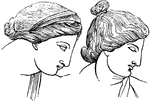
Venus and Diana
"Venus and Diana are generally represented with their hair dressed in the simple style of the young…
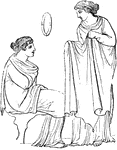
Peplus
"The peplus was a shawl which commonly formed part of the dress of females. It was often fastened…

Lectica
"Lectica was a kind of couch or litter, in which persons, in a lying position, were carried from one…

Banqueting room
"The Roman people reclined at their meals. On each couch there were commonly three persons. They lay…
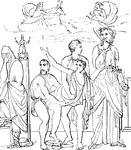
Sacrifice of Iphigenia
"The cut represents a painting from a wall at Pompeii, the subject of which is the sacrifice of Iphigenia,…

Lorica
"A cuirass. The cuirass was worn by the heavy-armed infantry both among the Greeks and Romans. The soldiers…

Lorica
"A cuirass. The cuirass was worn by the heavy-armed infantry both among the Greeks and Romans. The soldiers…

Herculaneum
"In the following we have back and front views of the heads of statues from Herculaneum, on which we…
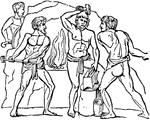
Malleus
"A hammer, a mallet. In the hands of the farmer the mallet of wood served to break down the clods and…
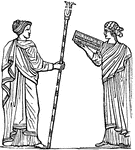
Mitra
"An eastern head-dress, sometimes spoken of as a characteristic of the Phrygians. It was also the name…

Paenula
"A thick cloak, cheifly used by the Romans in traveling, instead of the toga, as a protection against…

Coin of Diviciacus
The Coin of the King of the Suessiones, Diviciacus, with bust on front and prancing horse on back. Front.
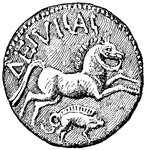
Coin of Diviciacus
The Coin of the King of the Suessiones, Diviciacus, with bust on front and prancing horse on back. Back.
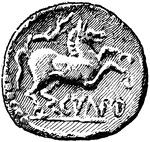
British Coin
British coin of the time period of the Roman invasion in the Gallic War, B.C. 54. Back.
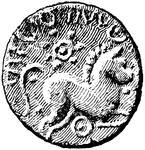
British Coin
British coin of the time period of the Roman invasion in the Gallic War, B.C. 54. Back.
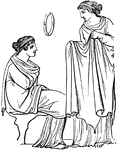
Peplum
"An outer garment, strictly worn by females, and thus corresponding to the himation or pallium, the…
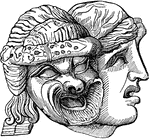
Persona
"A mask. Masks were worn by Greek and Roman actors in nearly all dramatic representations. This custom…

Persona
"A mask. Masks were worn by Greek and Roman actors in nearly all dramatic representations. This custom…
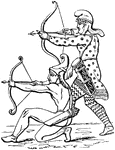
Phaetra
"A quiver, was principally made of hide or leather, and was adorned with gold, painting, and braiding.…

Pileus
"Any piece of felt; more especially, a skull-cap of felt, a hat. These seems no reason to doubt that…
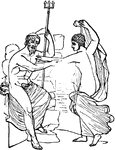
Reticulum
"A caul or coif of network for covering the hair, worn by women during the day as well as the night.…
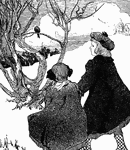
Poor Robin
The north wind doth blow, and we shall have snow, and what will poor Robin do then? Poor thing! He'll…

Queen of Hearts
The Queen of Hearts, she made some tarts, all on a summer's day; The Knave of Hearts, he stole those…

Speculum
"Speculum, a mirror, a looking-glass. The looking-glasses of the ancients were usually made of metal,…
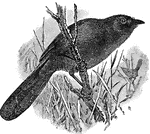
Wrentits
Having the plumage extremely lax and soft; rounded wings much shorter thn long, narrow, graduated tail;…
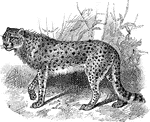
Cheetah
A hunting leopard. Has a short mane crest of hairs passing from the back of he head to the sholders.…
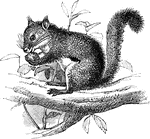
Red Squirrel
A small species of squirrel, about 7 inches long with a tail about the same length. The ears are tufted,…

